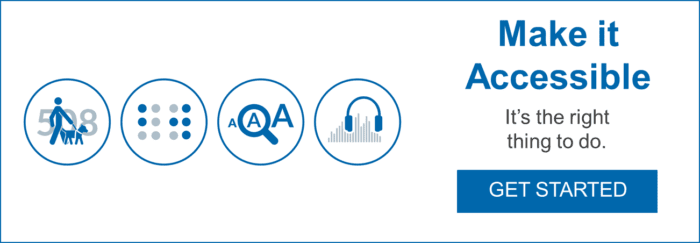Why the Rise in ADA Lawsuits
Published onSearch ADA Lawsuits and you will see the commonality in headlines, “ADA Lawsuits Are On the Rise.” There is a mix of reasons given, and many point to law firms finding a niche and preying on companies not in ADA compliance. Some of the articles are calling for a reversal of ADA laws, citing them as unfair for businesses. But, which came first, the egg or the chicken? Or, in this case, the lawsuit or the denial of access?
People who live with disabilities are not interested in litigation; they want equal access. When a person is denied equal access, there is a legitimate reason for them to enact their Civil Rights. Imagine if you went to a business and saw a sign on the door that read, “Only Men Served Here” or “Must have blonde hair to enter”; this is what businesses are doing by not providing equal access to goods, services, communication, and information. Equality isn’t a pick and choose practice.
The Americans with Disabilities Act (ADA) was enacted in 1990; therefore businesses have had ample time to figure out what equal access means and take the needed steps in implementation. Tax credits are offered to ease the cost of compliance for smaller companies, and timelines for full implementation are still being accepted as good faith towards compliance; provided the timeline is being followed and contingent on the practicality of the plan.
What has changed in the past year to cause this increase in ADA Lawsuits?
It might have something to do with the Department of Justice (DOJ) and the Office of Civil Rights (OCR). ADA cases were made a priority with these agencies, should a person feel he/she was discriminated against or not permitted equal access. In the past, the DOJ would investigate complaints made against organizations and assist the business in understanding how to be compliant. Sometimes fines were imposed, and sometimes they were not, but the result was typically accessibility granted. Today, these complaints are not a priority. So what recourse does a person with a disability have to be granted their civil right to equality? This brings people with disabilities to seek resolution via litigation.
Is being accessible and ADA compliant truly a burden? This is an equality issue after all.
There is no need to reinvent the wheel in ADA compliance and accessible. In fact, being ADA compliant is easier than you might think; you just need to know where to start. Contacting an ADA Compliance Specialist or Consulting Firm is a key measure, but it can also be costly. Here are some ideas to help take the first steps in being compliant.
- Understand the laws of providing equal access. This goes beyond ramps, parking spaces, and door width. People with Disabilities are also entitled to equal access to information, data, technology, menus, billing statements, medical documents, financial statements, contracts, and the like.
- Start with all people in mind, and you will always include everyone. Know where to access the services your clients might need before there is a need. (braille, large print, audio, and accessible digital formats)
- Publicize that alternative formats are available upon request in multiple areas of marketing.
- Have an accessible web site and attachments. This is where some businesses fall short. The web-site might be compliant, but the PDF attachments are inaccessible, rendering your website, inaccessible.
- Admit to your mistakes, no organization is perfect. When you know better, you can do better.
Thinking beyond legalities and financial risk.
You might be interested to know that many corporations from Apple to Microsoft have actually seen an increase in product use when they began designing with all people in mind. The talk to text/type applications has proven to be a convenience for all people. The ability to zoom in to read a text and highlight text on digital devices is another accessibility tool option that is widely used and relied upon.
Many times decisions are made based on assessing the risks and, often, these risks are viewed as financial and/or legal. Think beyond legalities and financial risk; what message is your organization sending about equality? Be a champion for people with disabilities by providing accessible and equal access to information, technology, and communication.
Most of these resources are free:
Categorized in: Accessibility, Informational
This post was written by






Comments are closed here.